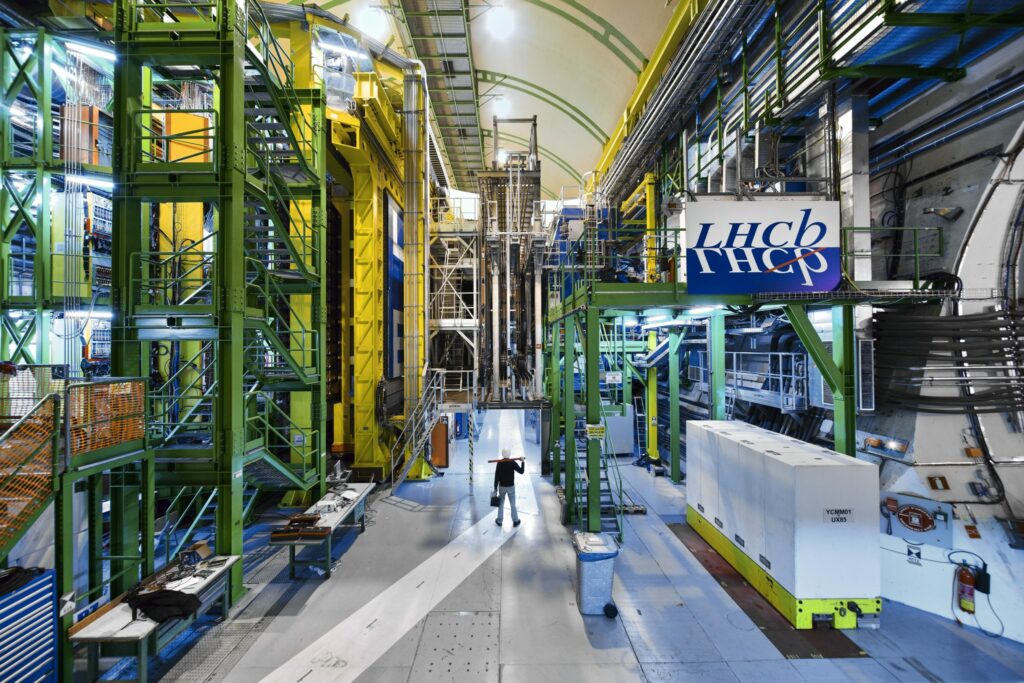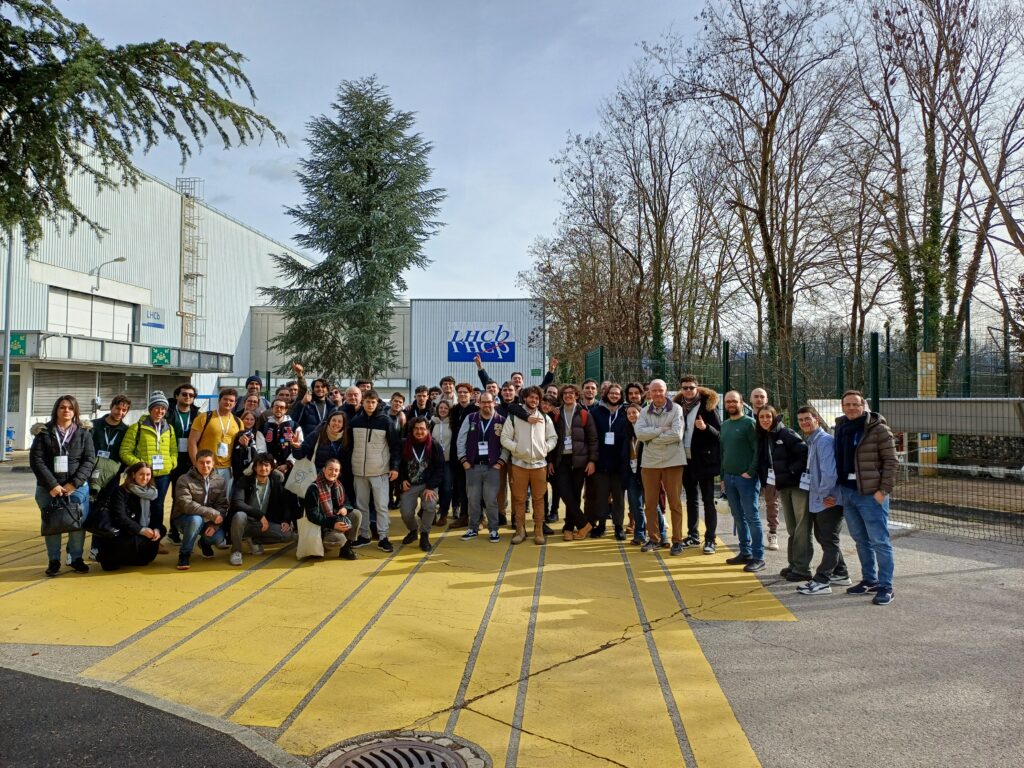Local Manager: Emanuele Santovetti; PI: Giovanni Punzi, Vincenzo Maria Vagnoni.

LHCb is an experiment set up to explore what happened after the Big Bang that allowed matter to survive and build the Universe we inhabit today. Fourteen billion years ago, the Universe began with a bang. Crammed within an infinitely small space, energy coalesced to form equal quantities of matter and antimatter. But as the Universe cooled and expanded, its composition changed. Just one second after the Big Bang, antimatter had all but disappeared, leaving matter to form everything that we see around us – from the stars and galaxies, to the Earth and all life that it supports.
The LHCb experiment is a single-arm spectrometer for the forward direction designed to fully exploit the B-physics potential of the Large Hadron Collider under construction at CERN. At a design luminosity of about ![]() , LHC is expected to yield about
, LHC is expected to yield about ![]() pairs per year, mostly concentrated at low polar angles with respect to the axis of the colliding beams. The main goal of LHCb is to provide accurate measurement of all the angles of the Unitarity Triangle(s), eventually demonstrating the need for new physics beyond the Standard Model.
pairs per year, mostly concentrated at low polar angles with respect to the axis of the colliding beams. The main goal of LHCb is to provide accurate measurement of all the angles of the Unitarity Triangle(s), eventually demonstrating the need for new physics beyond the Standard Model.
The LHCb apparatus has been designed to trigger efficiently on both leptonic and hadronic B decays and to allow particle identification capabilities – in particular pi/K separation – over the whole momentum spectra of B decay products. The detector consists of a high-performance vertex detector, a multi-station tracking system integrated by a 4 Tm dipole magnet for charged particle momentum measurement, two RICH detectors for particle identification, a calorimeter system for photon/electron identification and neutral particle energy measurement and a muon system for muon identification.
The Roma Tor Vergata group is involved in the design and construction of the muon system.

References:
Test of lepton flavour universality with B0s→ϕℓ+ℓ− decays
https://doi.org/10.48550/arXiv.2410.13748
Measurement of lepton universality parameters in B+ → K+ l+ l− and B0 → K*0 l+ l− decays
https://journals.aps.org/prd/abstract/10.1103/PhysRevD.108.032002








